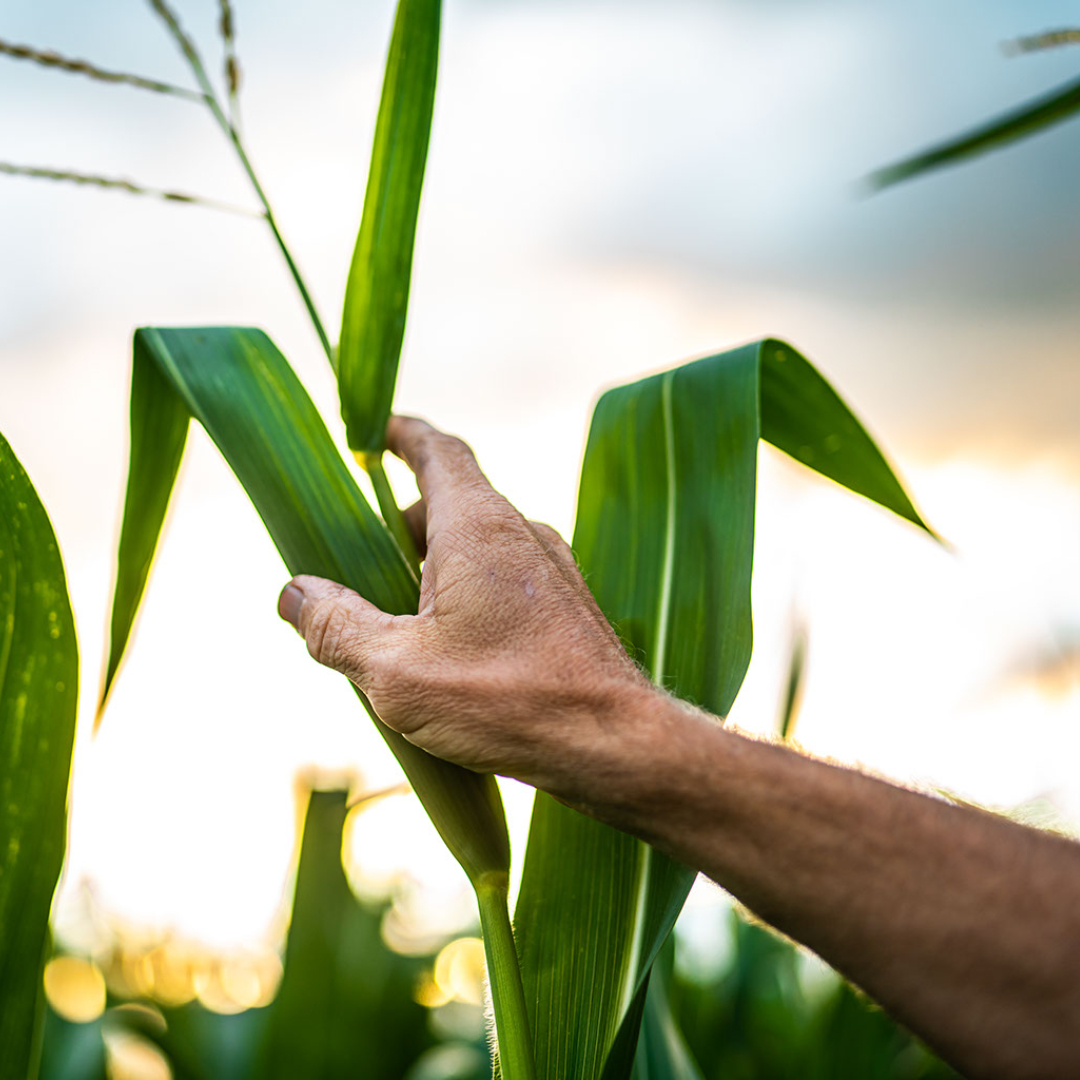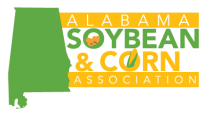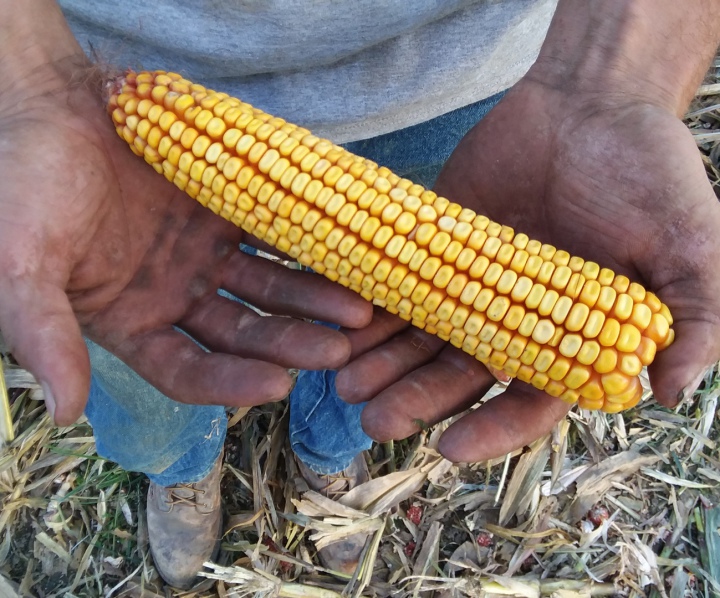As a farmer, you work from dawn to dusk. You plan. You budget. You worry. You sweat. You hope. You pray. And yet, one stroke of a pen in Washington, DC can do as much to make or break your profitability as the thousands of hours you devote to your crop each season.
News from NCGA
NCGA: Commerce Actions at Mosaic Corporations Request Could Drive Up Fertilizer Prices, Shorten Supply (Fri, 03 May 2024)
 Leaders at the National Corn Growers Association said today that they are worried about the availability and price of inputs after the Commerce Department announced plans to raise tariffs on
phosphorous fertilizers imported from Morocco from 2.12% to 14.21%.
Commerce’s actions come after the domestic fertilizer company Mosaic requested action from the agency in 2023 over an import dispute with another multi-national company.
“The price of corn has dropped, and input costs are already high, so the Commerce Department’s decision is the last thing farmers need,” said Minnesota farmer and NCGA President Harold Wolle. “If
fertilizers continue to go up in price and are hard to secure, farmers will only have Mosaic and the Commerce Department to thank.”
The proposed new rate would be the final retroactive tariff for 2022 imports and serve as the new provisional rate required to be deposited with U.S. Customs for imports from November 2024 and
onward until the conclusion of the next administrative review, if requested.
NCGA has spent the last two years sounding the alarms on the issue and lobbying to lower the tariffs or eliminate them altogether.
Leaders at the National Corn Growers Association said today that they are worried about the availability and price of inputs after the Commerce Department announced plans to raise tariffs on
phosphorous fertilizers imported from Morocco from 2.12% to 14.21%.
Commerce’s actions come after the domestic fertilizer company Mosaic requested action from the agency in 2023 over an import dispute with another multi-national company.
“The price of corn has dropped, and input costs are already high, so the Commerce Department’s decision is the last thing farmers need,” said Minnesota farmer and NCGA President Harold Wolle. “If
fertilizers continue to go up in price and are hard to secure, farmers will only have Mosaic and the Commerce Department to thank.”
The proposed new rate would be the final retroactive tariff for 2022 imports and serve as the new provisional rate required to be deposited with U.S. Customs for imports from November 2024 and
onward until the conclusion of the next administrative review, if requested.
NCGA has spent the last two years sounding the alarms on the issue and lobbying to lower the tariffs or eliminate them altogether.
>> Read more
Corn Growers Disappointed in GREET Model Update (Wed, 01 May 2024)
 An announcement this week by the U.S. Department of Treasury regarding the final guidance on eligibility for the Sustainable Aviation Fuel tax credits enacted in the Inflation Reduction Act was
met with concern from leaders at the National Corn Growers Association (NCGA) who say they are now committed to ensuring that the updated guidelines for the credit are
vastly improved.
NCGA raised specific issues with the changes Treasury made to the Department of Energy’s GREET model, which is used to measure greenhouse gas emissions and will be a crucial mechanism in
determining who receives the tax credit.
Corn grower leaders said they are particularly troubled that the updated model requires farmers to bundle the use of no-till practices, enhanced efficiency fertilizers and cover crops for their
grain to meet the standards now required to qualify for the tax credit.
“We are deeply disappointed that this updated model requires farmers to implement environmental practices that are not practical for all acres of the large and varied geographic region in which
corn is grown,” said Minnesota farmer and NCGA President Harold Wolle. “This requirement in GREET will significantly hinder the chances corn growers have in accessing the sustainable aviation fuel
market, even as higher blends of corn ethanol offer great promise in the country’s fight against greenhouse gas emissions and climate change.”
Wolle noted that cover crops can be difficult, if not impossible, to grow in dryer climates, making the bundling requirement extremely unreasonable. He also noted that growers should be able to
implement their own environmental practices.
“As corn growers, we already understand the environmental practices that work best for our growing conditions and climate, so it is not necessary for the government to dictate specifically how we
reach an emissions reduction goal,” Wolle said. “Farmers are going to have different methods depending on a variety of factors, including where their farms are located.”
The Inflation Reduction Act, passed in 2022, allocates tax credits for biofuels that can demonstrate that they cut greenhouse gas emissions by 50% or more. After the law was passed, Treasury and
EPA were charged with choosing a model that would measure emissions throughout the life of biofuels.
NCGA has been at the forefront of this issue, making a case about how ethanol can help the aviation sector meet the nation’s environmental goals. But recent developments have made growers question
the Biden administration’s commitment to using ethanol as a climate solution.
“President Biden has repeatedly said that biofuels will play an important role in the decarbonization of the transportation sector,” Wolle said. “Yet, this announcement and the recently finalized
Multi-Pollutant Rule issued by the EPA have left corn growers across the country grasping for ideas on just how they will be able to contribute to this effort.”
Wolle said NCGA and corn growers across the country will increase their advocacy efforts to improve the changes Treasury made to the GREET model as the Biden administration focuses on the next
phase of the Inflation Reduction Act for passenger vehicles, referred to as the 45Z tax credit. The 45Z tax credit will take effect at the beginning of 2025. As part of the law, the aviation tax
credit will be folded into the 45Z tax credit beginning on January 1, 2025.
NCGA has been concerned about the delays with the release of the sustainable aviation fuel guidance because the regulatory uncertainty is beginning to impact fuel delivery contracts already being
negotiated for January of next year.
An announcement this week by the U.S. Department of Treasury regarding the final guidance on eligibility for the Sustainable Aviation Fuel tax credits enacted in the Inflation Reduction Act was
met with concern from leaders at the National Corn Growers Association (NCGA) who say they are now committed to ensuring that the updated guidelines for the credit are
vastly improved.
NCGA raised specific issues with the changes Treasury made to the Department of Energy’s GREET model, which is used to measure greenhouse gas emissions and will be a crucial mechanism in
determining who receives the tax credit.
Corn grower leaders said they are particularly troubled that the updated model requires farmers to bundle the use of no-till practices, enhanced efficiency fertilizers and cover crops for their
grain to meet the standards now required to qualify for the tax credit.
“We are deeply disappointed that this updated model requires farmers to implement environmental practices that are not practical for all acres of the large and varied geographic region in which
corn is grown,” said Minnesota farmer and NCGA President Harold Wolle. “This requirement in GREET will significantly hinder the chances corn growers have in accessing the sustainable aviation fuel
market, even as higher blends of corn ethanol offer great promise in the country’s fight against greenhouse gas emissions and climate change.”
Wolle noted that cover crops can be difficult, if not impossible, to grow in dryer climates, making the bundling requirement extremely unreasonable. He also noted that growers should be able to
implement their own environmental practices.
“As corn growers, we already understand the environmental practices that work best for our growing conditions and climate, so it is not necessary for the government to dictate specifically how we
reach an emissions reduction goal,” Wolle said. “Farmers are going to have different methods depending on a variety of factors, including where their farms are located.”
The Inflation Reduction Act, passed in 2022, allocates tax credits for biofuels that can demonstrate that they cut greenhouse gas emissions by 50% or more. After the law was passed, Treasury and
EPA were charged with choosing a model that would measure emissions throughout the life of biofuels.
NCGA has been at the forefront of this issue, making a case about how ethanol can help the aviation sector meet the nation’s environmental goals. But recent developments have made growers question
the Biden administration’s commitment to using ethanol as a climate solution.
“President Biden has repeatedly said that biofuels will play an important role in the decarbonization of the transportation sector,” Wolle said. “Yet, this announcement and the recently finalized
Multi-Pollutant Rule issued by the EPA have left corn growers across the country grasping for ideas on just how they will be able to contribute to this effort.”
Wolle said NCGA and corn growers across the country will increase their advocacy efforts to improve the changes Treasury made to the GREET model as the Biden administration focuses on the next
phase of the Inflation Reduction Act for passenger vehicles, referred to as the 45Z tax credit. The 45Z tax credit will take effect at the beginning of 2025. As part of the law, the aviation tax
credit will be folded into the 45Z tax credit beginning on January 1, 2025.
NCGA has been concerned about the delays with the release of the sustainable aviation fuel guidance because the regulatory uncertainty is beginning to impact fuel delivery contracts already being
negotiated for January of next year.
>> Read more
 Leaders at the National Corn Growers Association said today that they are worried about the availability and price of inputs after the Commerce Department announced plans to raise tariffs on
phosphorous fertilizers imported from Morocco from 2.12% to 14.21%.
Commerce’s actions come after the domestic fertilizer company Mosaic requested action from the agency in 2023 over an import dispute with another multi-national company.
“The price of corn has dropped, and input costs are already high, so the Commerce Department’s decision is the last thing farmers need,” said Minnesota farmer and NCGA President Harold Wolle. “If
fertilizers continue to go up in price and are hard to secure, farmers will only have Mosaic and the Commerce Department to thank.”
The proposed new rate would be the final retroactive tariff for 2022 imports and serve as the new provisional rate required to be deposited with U.S. Customs for imports from November 2024 and
onward until the conclusion of the next administrative review, if requested.
NCGA has spent the last two years sounding the alarms on the issue and lobbying to lower the tariffs or eliminate them altogether.
Leaders at the National Corn Growers Association said today that they are worried about the availability and price of inputs after the Commerce Department announced plans to raise tariffs on
phosphorous fertilizers imported from Morocco from 2.12% to 14.21%.
Commerce’s actions come after the domestic fertilizer company Mosaic requested action from the agency in 2023 over an import dispute with another multi-national company.
“The price of corn has dropped, and input costs are already high, so the Commerce Department’s decision is the last thing farmers need,” said Minnesota farmer and NCGA President Harold Wolle. “If
fertilizers continue to go up in price and are hard to secure, farmers will only have Mosaic and the Commerce Department to thank.”
The proposed new rate would be the final retroactive tariff for 2022 imports and serve as the new provisional rate required to be deposited with U.S. Customs for imports from November 2024 and
onward until the conclusion of the next administrative review, if requested.
NCGA has spent the last two years sounding the alarms on the issue and lobbying to lower the tariffs or eliminate them altogether.
>> Read more
Corn Growers Disappointed in GREET Model Update (Wed, 01 May 2024)
 An announcement this week by the U.S. Department of Treasury regarding the final guidance on eligibility for the Sustainable Aviation Fuel tax credits enacted in the Inflation Reduction Act was
met with concern from leaders at the National Corn Growers Association (NCGA) who say they are now committed to ensuring that the updated guidelines for the credit are
vastly improved.
NCGA raised specific issues with the changes Treasury made to the Department of Energy’s GREET model, which is used to measure greenhouse gas emissions and will be a crucial mechanism in
determining who receives the tax credit.
Corn grower leaders said they are particularly troubled that the updated model requires farmers to bundle the use of no-till practices, enhanced efficiency fertilizers and cover crops for their
grain to meet the standards now required to qualify for the tax credit.
“We are deeply disappointed that this updated model requires farmers to implement environmental practices that are not practical for all acres of the large and varied geographic region in which
corn is grown,” said Minnesota farmer and NCGA President Harold Wolle. “This requirement in GREET will significantly hinder the chances corn growers have in accessing the sustainable aviation fuel
market, even as higher blends of corn ethanol offer great promise in the country’s fight against greenhouse gas emissions and climate change.”
Wolle noted that cover crops can be difficult, if not impossible, to grow in dryer climates, making the bundling requirement extremely unreasonable. He also noted that growers should be able to
implement their own environmental practices.
“As corn growers, we already understand the environmental practices that work best for our growing conditions and climate, so it is not necessary for the government to dictate specifically how we
reach an emissions reduction goal,” Wolle said. “Farmers are going to have different methods depending on a variety of factors, including where their farms are located.”
The Inflation Reduction Act, passed in 2022, allocates tax credits for biofuels that can demonstrate that they cut greenhouse gas emissions by 50% or more. After the law was passed, Treasury and
EPA were charged with choosing a model that would measure emissions throughout the life of biofuels.
NCGA has been at the forefront of this issue, making a case about how ethanol can help the aviation sector meet the nation’s environmental goals. But recent developments have made growers question
the Biden administration’s commitment to using ethanol as a climate solution.
“President Biden has repeatedly said that biofuels will play an important role in the decarbonization of the transportation sector,” Wolle said. “Yet, this announcement and the recently finalized
Multi-Pollutant Rule issued by the EPA have left corn growers across the country grasping for ideas on just how they will be able to contribute to this effort.”
Wolle said NCGA and corn growers across the country will increase their advocacy efforts to improve the changes Treasury made to the GREET model as the Biden administration focuses on the next
phase of the Inflation Reduction Act for passenger vehicles, referred to as the 45Z tax credit. The 45Z tax credit will take effect at the beginning of 2025. As part of the law, the aviation tax
credit will be folded into the 45Z tax credit beginning on January 1, 2025.
NCGA has been concerned about the delays with the release of the sustainable aviation fuel guidance because the regulatory uncertainty is beginning to impact fuel delivery contracts already being
negotiated for January of next year.
An announcement this week by the U.S. Department of Treasury regarding the final guidance on eligibility for the Sustainable Aviation Fuel tax credits enacted in the Inflation Reduction Act was
met with concern from leaders at the National Corn Growers Association (NCGA) who say they are now committed to ensuring that the updated guidelines for the credit are
vastly improved.
NCGA raised specific issues with the changes Treasury made to the Department of Energy’s GREET model, which is used to measure greenhouse gas emissions and will be a crucial mechanism in
determining who receives the tax credit.
Corn grower leaders said they are particularly troubled that the updated model requires farmers to bundle the use of no-till practices, enhanced efficiency fertilizers and cover crops for their
grain to meet the standards now required to qualify for the tax credit.
“We are deeply disappointed that this updated model requires farmers to implement environmental practices that are not practical for all acres of the large and varied geographic region in which
corn is grown,” said Minnesota farmer and NCGA President Harold Wolle. “This requirement in GREET will significantly hinder the chances corn growers have in accessing the sustainable aviation fuel
market, even as higher blends of corn ethanol offer great promise in the country’s fight against greenhouse gas emissions and climate change.”
Wolle noted that cover crops can be difficult, if not impossible, to grow in dryer climates, making the bundling requirement extremely unreasonable. He also noted that growers should be able to
implement their own environmental practices.
“As corn growers, we already understand the environmental practices that work best for our growing conditions and climate, so it is not necessary for the government to dictate specifically how we
reach an emissions reduction goal,” Wolle said. “Farmers are going to have different methods depending on a variety of factors, including where their farms are located.”
The Inflation Reduction Act, passed in 2022, allocates tax credits for biofuels that can demonstrate that they cut greenhouse gas emissions by 50% or more. After the law was passed, Treasury and
EPA were charged with choosing a model that would measure emissions throughout the life of biofuels.
NCGA has been at the forefront of this issue, making a case about how ethanol can help the aviation sector meet the nation’s environmental goals. But recent developments have made growers question
the Biden administration’s commitment to using ethanol as a climate solution.
“President Biden has repeatedly said that biofuels will play an important role in the decarbonization of the transportation sector,” Wolle said. “Yet, this announcement and the recently finalized
Multi-Pollutant Rule issued by the EPA have left corn growers across the country grasping for ideas on just how they will be able to contribute to this effort.”
Wolle said NCGA and corn growers across the country will increase their advocacy efforts to improve the changes Treasury made to the GREET model as the Biden administration focuses on the next
phase of the Inflation Reduction Act for passenger vehicles, referred to as the 45Z tax credit. The 45Z tax credit will take effect at the beginning of 2025. As part of the law, the aviation tax
credit will be folded into the 45Z tax credit beginning on January 1, 2025.
NCGA has been concerned about the delays with the release of the sustainable aviation fuel guidance because the regulatory uncertainty is beginning to impact fuel delivery contracts already being
negotiated for January of next year.
>> Read more






